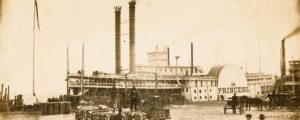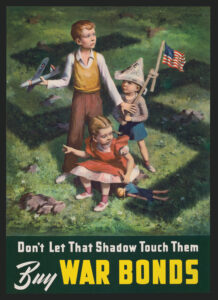The Dark Intrigue: The True Story of a Civil War Conspiracy
by Frank Van Der Linden, Fulcrum Publishing
In his acclaimed 1991 study of Abraham Lincoln and civil liberties, Mark Neely Jr. concluded that historical scholarship over the previous 30 years had proved “beyond any reasonable doubt, that no systematic, organized disloyal opposition to the war existed in the North.” Well, the great thing about history is there’s almost always room for reasonable doubt.
Just ask an experienced newshound like Frank Van Der Linden, an esteemed political writer for more than 60 years who recently came across a cache of letters by Confederate agent, and former U.S. Senator from Alabama, Clement C. Clay Jr. at the National Archives. The letters confirm that several members of the Democratic Party met with Rebel operatives in Canada in the summer of 1864 to draw up the party’s convention platform and plan the defeat of Abraham Lincoln in the November elections—by fair means or foul. Van Der Linden knew he had his hands on a first-class yarn, a 19thcentury tragicomic operetta replete with a cast of cunning conspirators, pretentious poseurs, behind-the-scene manipulators, vainglorious louts, innocent dupes and overeager office seekers, with a few honest-and-true champions sprinkled in as well.
Weaving a conspiratorial maze like that into a coherent narrative requires someone with special skills, however— a dogged investigative reporter capable of following each lead, no matter how twisted, and separating the essential from the ephemeral. It also requires the gift of a master storyteller to draw the reader into this nest of intrigue, place it at the heart of the nation’s political system and show the determination of the Lincoln administration to prosecute the war until the Union was restored and slavery abolished.
Fortunately, Van Der Linden possesses these skills. In The Dark Intrigue the veteran reporter, who once played poker and drank bourbon with Harry Truman and his cronies, has delivered a captivating, fast-paced account of an American tragedy.
The “Dark Intrigue” in the book’s title was the nomination of George B. McClellan for president on the Democratic ticket in 1864. McClellan’s nomination, however, merely marks “the climax of a dark intrigue begun in 1861 by certain powerful men who were sympathetic to the South and carefully brought to fruition, by carrying out their antiwar schemes.”
The first third of the book, a bit much perhaps, puts the conspiracy in historical context. The plot really thickens in March 1864, however, when the Confederate leadership meets in Richmond “to plan their last desperate moves—which would include subversion, espionage, sabotage, and even an attempt to form a Northwest Confederacy.”
Their infernal schemes, Van Der Linden writes, “also intended to lure certain Northern Democratic politicians into their dark intrigue by insinuating that an armistice, halting the war for only a few months, might lead to the restoration of the old Union.”
The Confederates were tilling fertile ground. After three years of bloodletting, even Lincoln had serious misgivings about his ability to be reelected in 1864. Many in the North, particularly in Ohio, Indiana and Illinois, were war-weary and susceptible to schemes that promised an end to the fighting, restoration of the old Union and leaving slavery alone. To the Northern Democrats, this was the preferred outcome, and the Confederates played to their prejudices. Spearheading the Rebel political efforts were the crafty George Nicholas Sanders; Jacob Thompson, a Mississippian and interior secretary in the Buchanan administration; Clay; and J.P. Holcombe, a scholar from Virginia. All were sent to Canada with sufficient funds to foment mischief.
The Confederacy planned to augment its political offensive with paramilitary operations, primarily in the old Northwest, where secret organizations such as the Knights of the Golden Circle and the Sons of Liberty had been having some success recruiting young men disaffected with the idea of fighting for the emancipation of blacks but unable to afford the $300 fee to buy a substitute. Hard men such as Captains Thomas H. Hines and John B. Castleman, funded by Confederate bank accounts in Canada, hatched plots to free Confederate prisoners held at, among other sites, Camp Douglas near Chicago and Camp Morton in Indiana. Their objective was to form Rebel armies far behind Union lines and foment secessionist activities in the state legislatures of Illinois, Indiana and Ohio.
For all the sound and fury stirred up by Confederate machinations, however, little came from any of them—in fact, most were outed in the newspapers. Confederate plots and conspiracies also drew their fair share of opportunists, spies and counterspies. Secretary of State William Seward was kept so well informed by Union operatives that he practically outlined the Confederates’ entire web of conspiracy in a speech kicking off Lincoln’s reelection campaign on September 3, 1864, in Auburn, N.Y.: “Here we have a nomination and a platform,” Seward proclaimed, “which were made by a treaty formally contracted between the Democratic traitors in Richmond and the Democratic opposition at Chicago, signed, sealed, and delivered.”
Through it all, Little Mac stood apart from the fray, his ego at war with his conscience. He wanted to be president, although not at the cost of supporting a “war failure” plank at the convention. McClellan lost the election—but the shift of just a few votes in key states had changed the outcome.
The Republicans did not come out of the 1864 campaign with clean hands either. Writes Van Der Linden: “There is much evidence…the Lincoln administration misused executive powers ruthlessly to guarantee that the secessionists and their Northern allies would not take over the government and impose an armistice and a peace favorable to the South.”
Originally published in the December 2008 issue of Civil War Times. To subscribe, click here.




